Limehouse Accumulator Tower – eccentric joys of London

I’ve always had some strange admiration for Victorian Britain. The sheer yet elegant scale of many of the machines needed thanks to nothing more advanced than coal power. So as today was London Open House day I thought it would be worth my while to pay a visit to a symbol of London’s Victorian industry not normally open to the public – the Limehouse Accumulator Tower. Thousands of commuters pass the 30m high brick built tower on a daily basis – it’s right beside the Docklands Light Railway just east of Limehouse station, and it’s a (no longer working) example of a raised weight hydraulic accumulator used to power the cranes at the nearby Limehouse basin between 1869 and the 1920s.
Coal boilers were used to pressurise water, pushing 100 tonnes of gravel and pig iron upwards inside the tower, acting as a regulator of the pressure of the water in a network of pipes used to power the dock machinery. The idea of powering cranes using steam turbines and a 100-tonne weight seems so bizarre today, but that was the way in Victorian Britain.
Visits on Open House day are free, and I took plenty of pictures of the event (click Read More to read them) – including of the 3 cheery volunteers showing people this interesting piece of industrial history. Pay it a visit next year!
The Limehouse Accumulator Tower
DLR train passing the tower
Staircase inside the tower
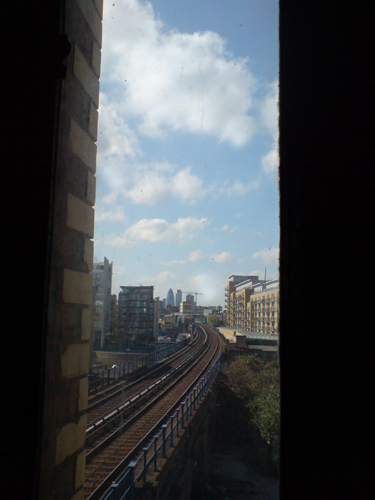
View from the window of the tower
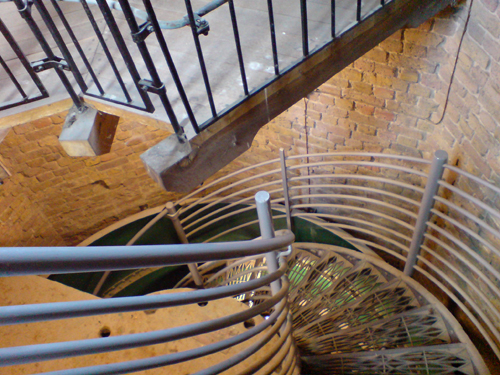
More of the staircase inside
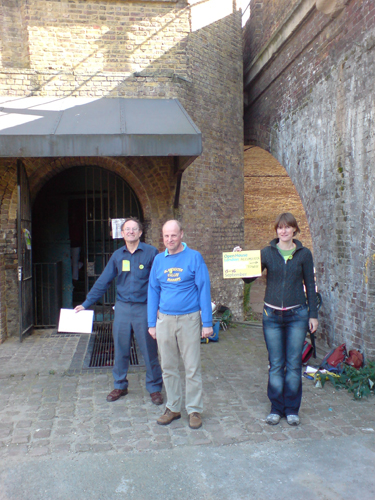
The cheery and helpful team of volunteers
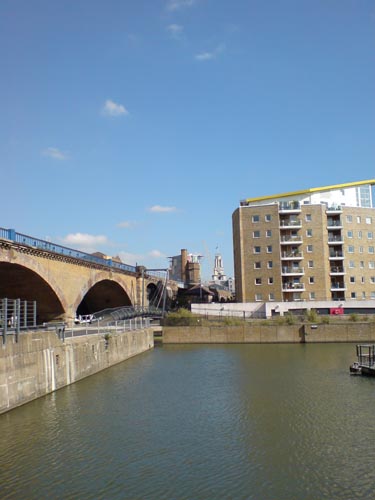
Approach to the tower from Limehouse
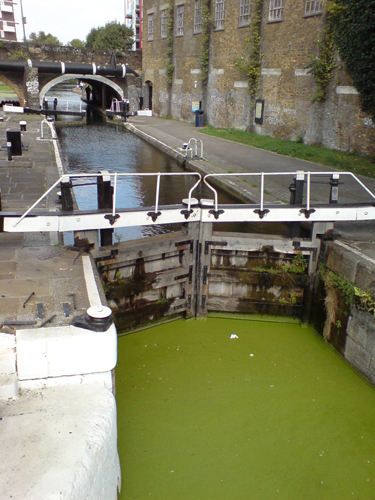
Grand Union Canal – barges loaded with the hydraulic cranes used this canal
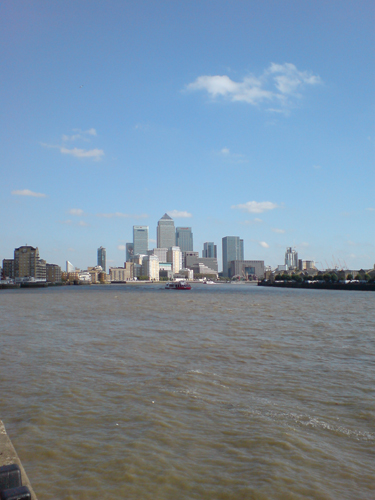
Not to do with the tower! But a pleasant picture taken on my walk away from Limehouse
Love this gem. A accumulator tower. Had to read what on earth that was! Sounds wonderful. Looks great. Would love to view. When is the next open day please.
John Weaver
What a fascinating place! Must visit it as soon as I can. Thank you very much.
Thanks for this – very interesting. I have inserted a link into my blog where I am exploring London with Bradshaw’s Hand Book to London, 1862
This year it;s 17 and 18 September. Come along and help us out!
Jon.. Just planning a `Thames & Docklands’ tour for my Blue Badge course and of course wanted to include the accumulator tower. Great to see all the interest in it!
This Open House Weekend, this year the 18 and 19 September, the Limehouse Accumulator will be open to the public.
Please come and see us!
@Charles – just corrected the post here, for some reason the pics were not showing. Are you one of the people on the pic there?
I am in the middle of moving flat at the moment, so I don’t know if I can make it, but I’ll do my best! I’ve also given you a plug on Twitter here.
What a fantastic comment – thank you! 🙂
Judging by the Google Search terms there’s a steady stream of people looking for information about the Limehouse Accumulator Tower.
i enjoyed my visit to your blog and spent several minutes later, recalling old times.
in my late teens i was an engineering apprentice at the bombay docks and there was a hydraulic engine house that delivered power throughout the docklands.
later after several visits to england on ships, in 1969, i was briefly a student at poplar technical college and must have passed the engine house you describe several times. but alas i scarcely took notice.
now at 65 i long for those simpler days. in fact i have not been in england since 1969 nor am i likely to do so ever, unless of course you bring back the pounds, shillings and pence i was so used to!
it was quite amusing -and sobering- to learn from a reader’s comment that the hydraulic pipelines in london now carry data cables. much as i may mourn for old times, i love this news, for wasn’t it the internet that helped me find your nice article and photos?
There was a network of pipes all over London carrying pressurised water from this system to customers; specifically the docks, but also big office buildings and hotels with lots of lifts to drive. It was in use up to 1976, when one of the last of the docks closed down.
Two years later, the pipelines were bought up by a consortium of bankers; the City was beginning to computerise and they realised they were about to need a *lot* of phone lines. Hence COLT.net (for City of London Telecoms); the ISP began by laying fibre in the hydraulic pipes.